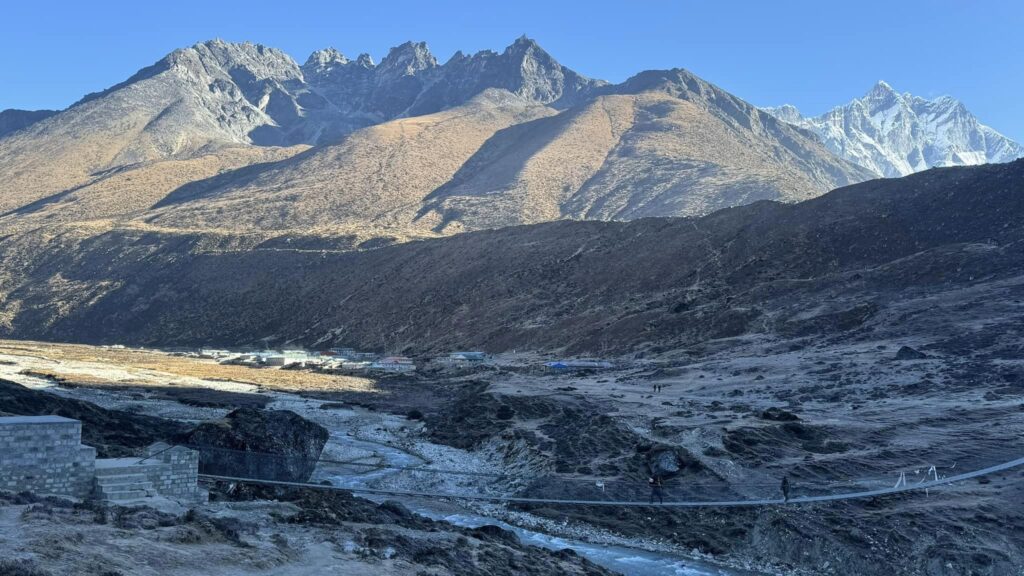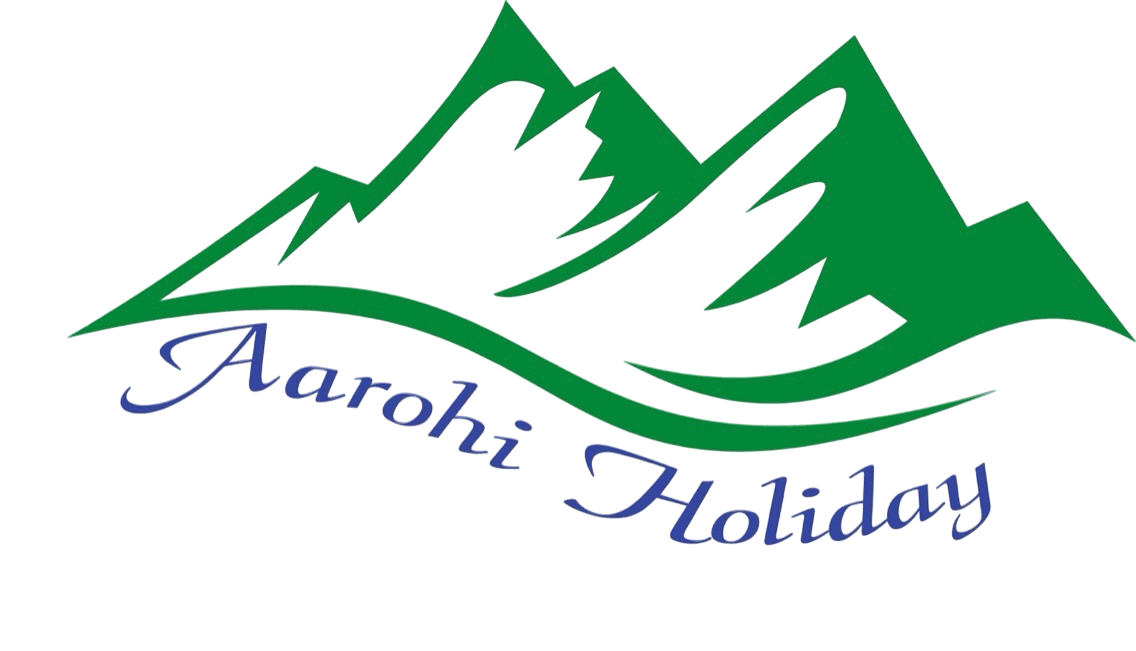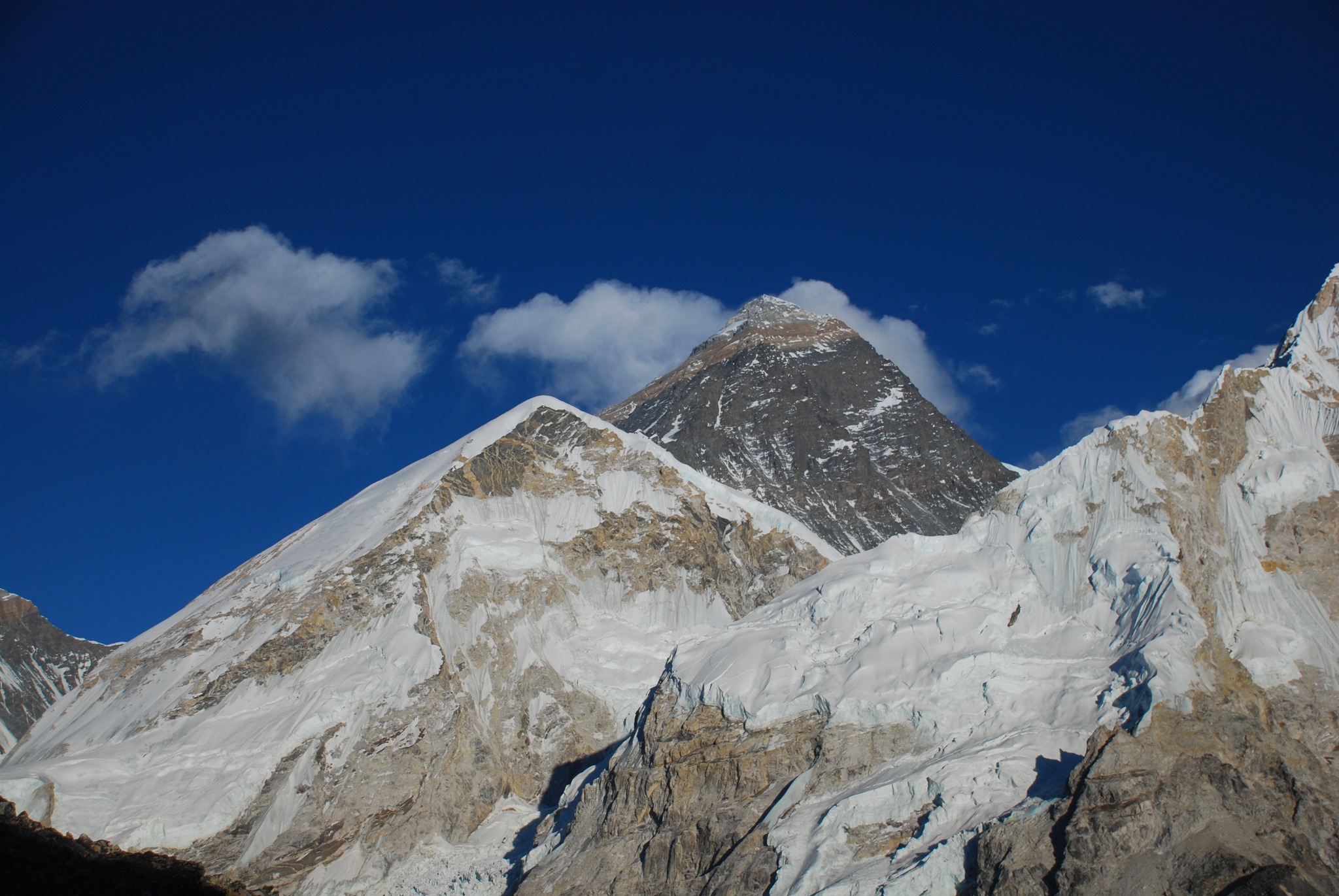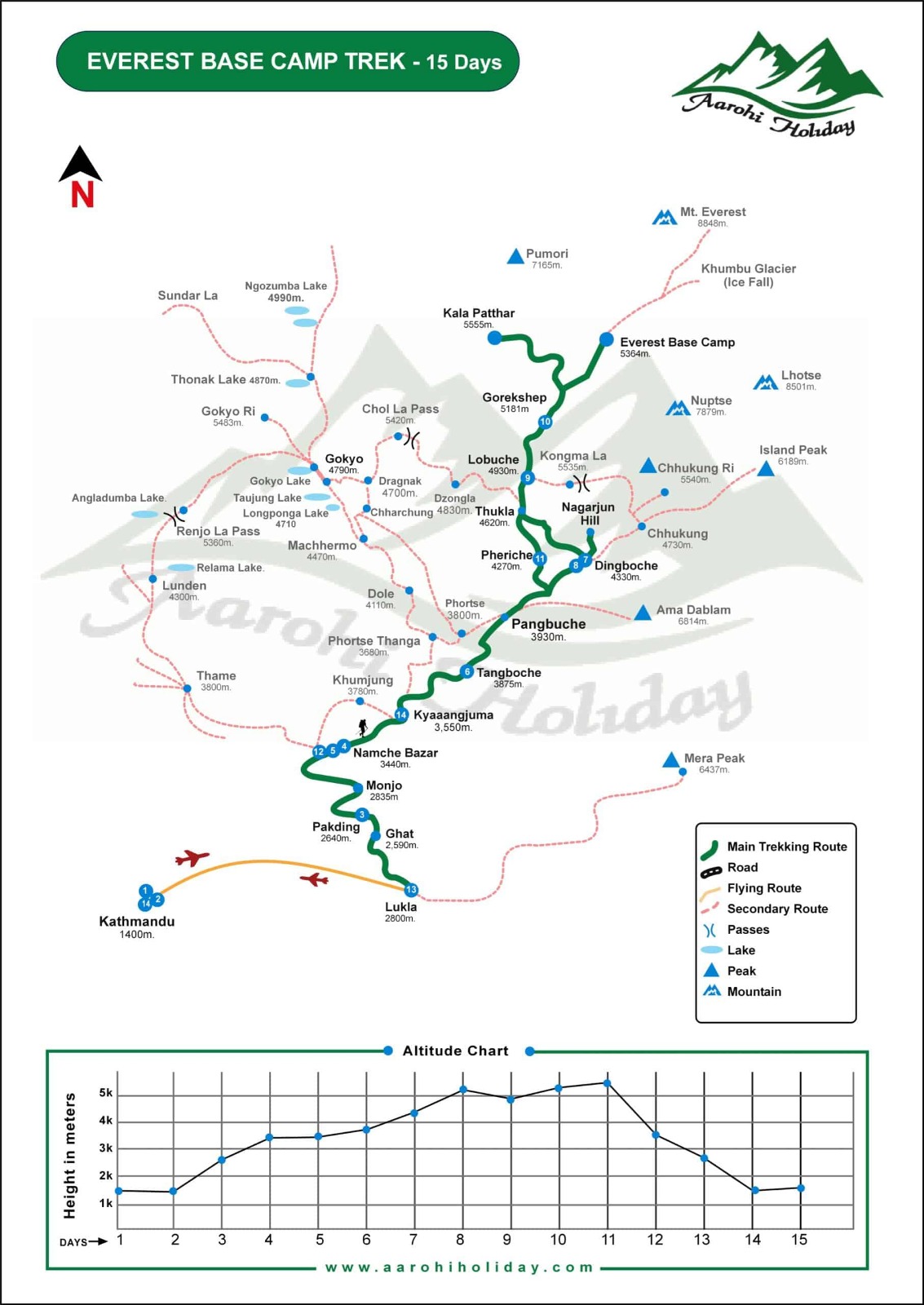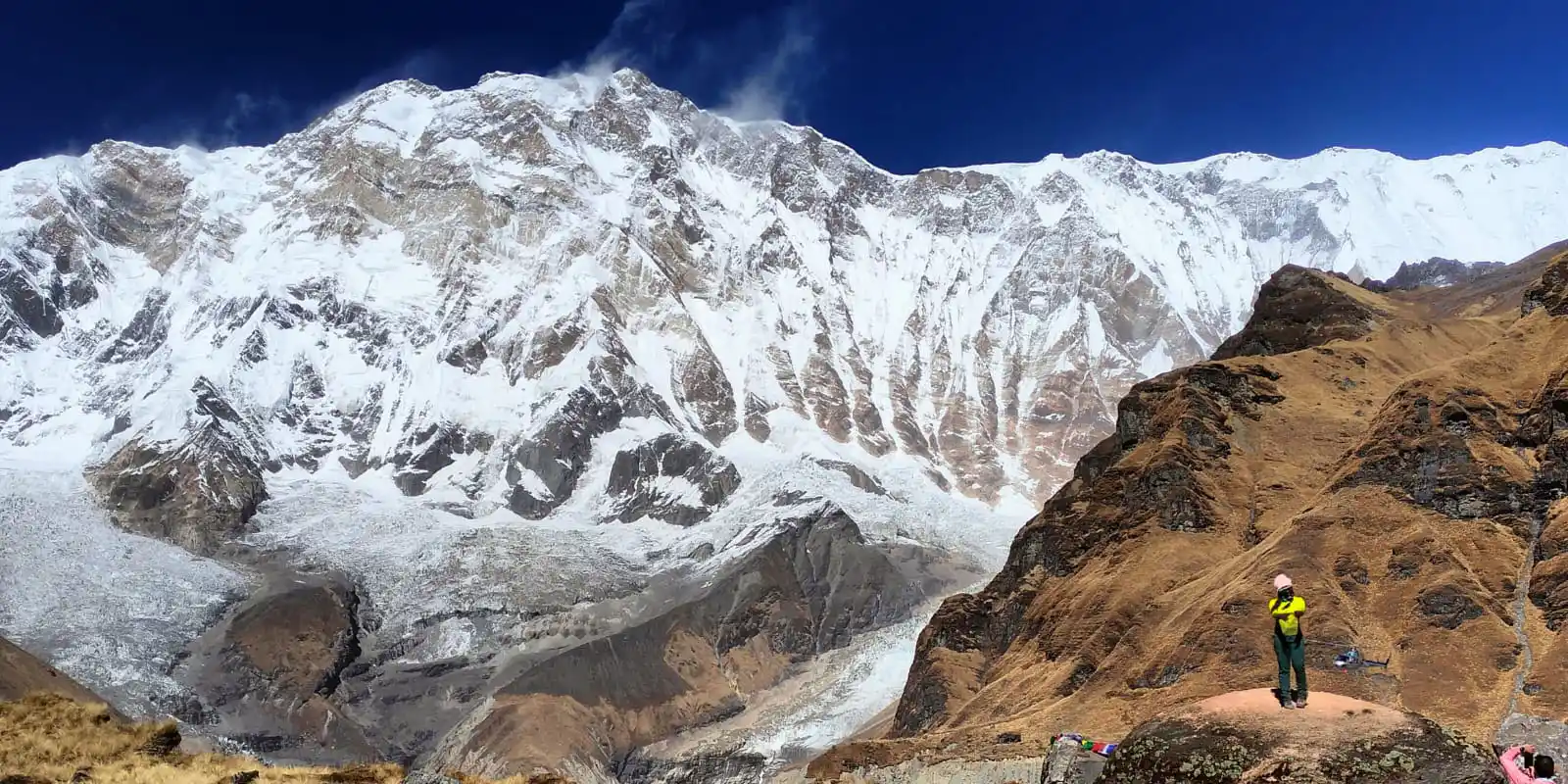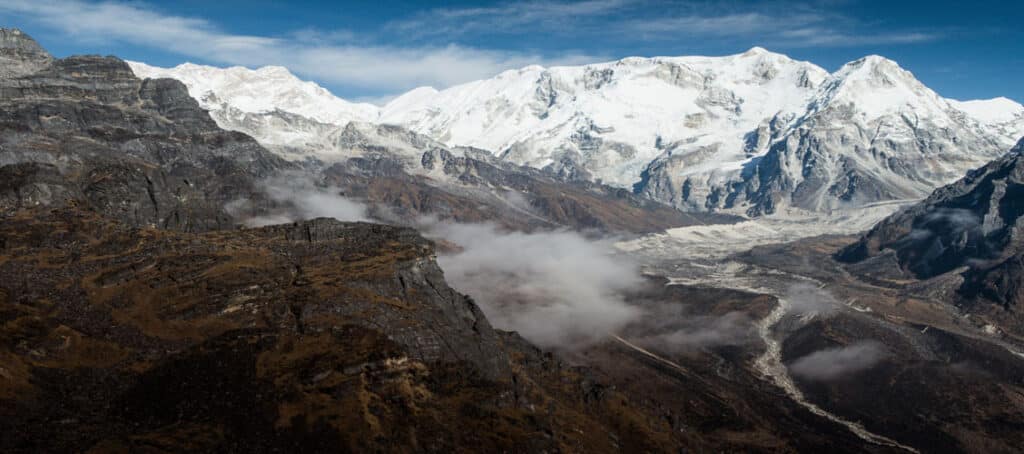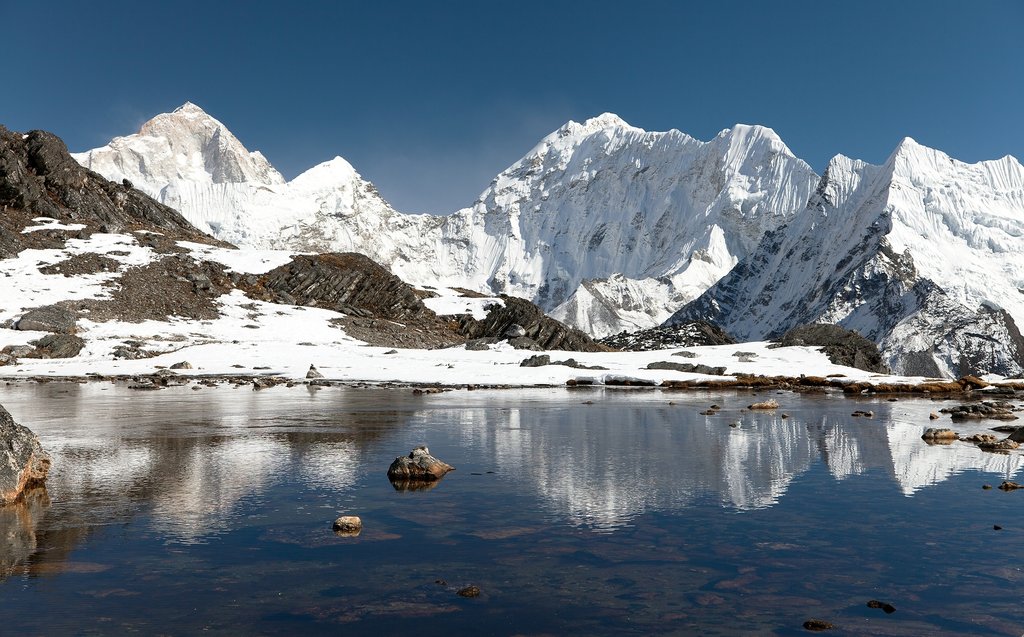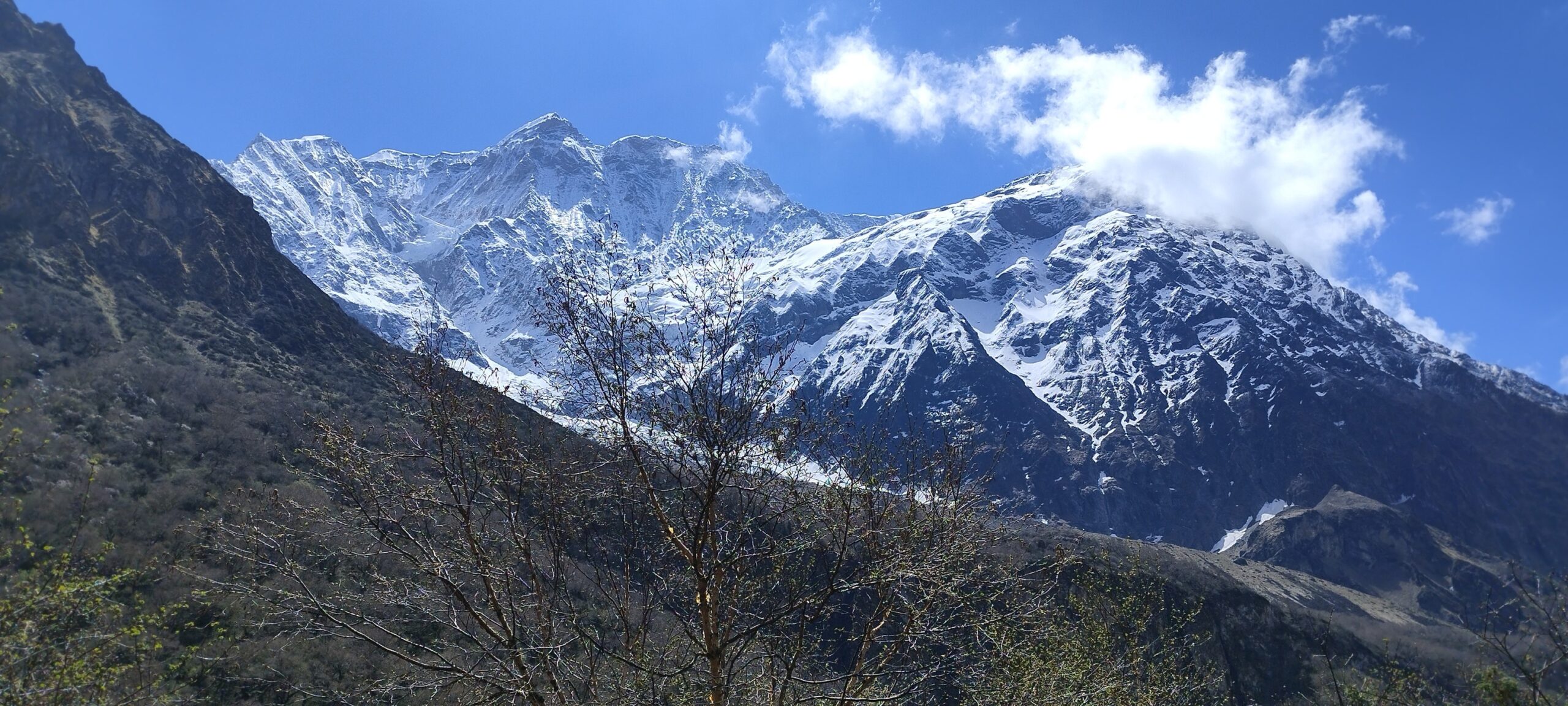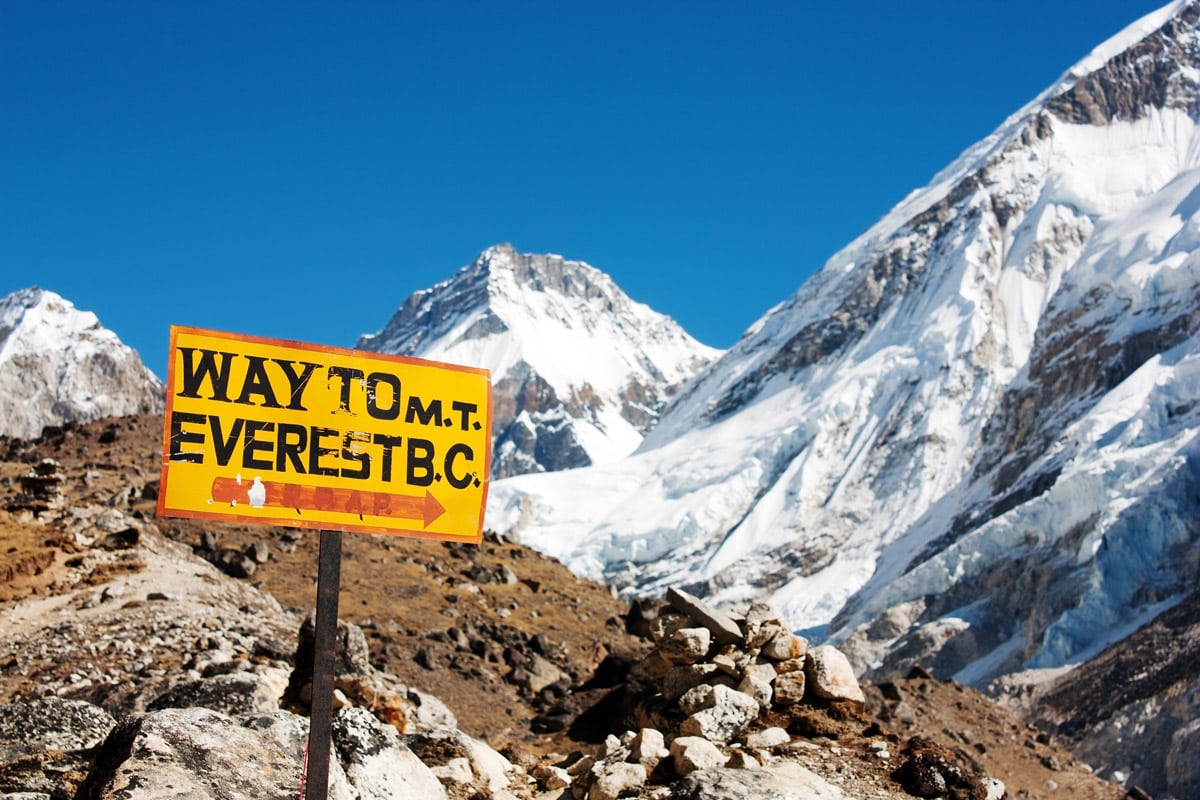Accommodation during Everest Base Camp Trek
- In Kathmandu we provide comfortable accommodation in 3-star hotels with breakfast on a twin-sharing basis.(Private room accommodation can be organized at an extra cost)
- During the trek, we provide comfortable teahouse accommodation on a twin-sharing basis. Hot showers, Wi-Fi, and device charging are available at an additional cost.
Meals and Drinking water on the Everest Base Camp Trek
During the Everest Base Camp Trek, you will enjoy three nutritious meals a day—breakfast, lunch, and dinner—served at local teahouses along the trail. All meals are freshly prepared using locally available ingredients. You can choose your meals from the menu at each teahouse, which typically includes Nepali staples like dal bhat (rice, lentils, and vegetables), as well as a variety of international and regional options such as Tibetan bread, pancakes, porridge, boiled or fried eggs, noodles, fried rice, soups, pasta, and momos (dumplings). Though simple, the meals are filling and designed to meet the energy needs of high-altitude trekking.
Staying hydrated is just as important as eating well. Bottled water is available for purchase throughout the route, but we highly encourage you to bring a refillable bottle or hydration bladder to reduce plastic waste. Our trained guide will provide water purification tablets or drops, allowing you to safely drink boiled or tap water along the way. Proper nutrition and consistent hydration will help you stay energized, support acclimatization, and make your trek to Everest Base Camp more enjoyable and comfortable.
Required Permits for the Everest Base Camp Trek
For the Everest Base Camp Trek, you’ll need a TIMS Card, Sagarmatha National Park Permit, and Khumbu Pasang Lhamu Rural Municipality Permit—but don’t worry, we handle all fees and paperwork so you can focus on the adventure.
- Sagarmatha National Park Entry Permit: NPR 3,000 per person.
- Khumbu Pasang Lhamu Rural Municipality Permit: NPR 2,000 per person.
- TIMS Card cost: NPR 1000 per person.
Best Time for Everest Base Camp Trek
The best time for the Everest Base Camp Trek is in autumn (September to November) and spring (March to May). These seasons offer stable weather, clear blue skies, and breathtaking mountain views—perfect for trekking and photography. Autumn brings crisp air and stunning landscapes, while spring adds a splash of color with blooming rhododendrons and mild temperatures.
Winter (December to February) is colder, with snow at higher altitudes, making the trek more challenging but peaceful for those who enjoy fewer crowds. The monsoon season (June to August) is not recommended, as heavy rainfall can cause slippery trails, poor visibility, and frequent flight delays or cancellations.
Everest Base Camp Trek Difficulties
The Everest Base Camp Trek is a physically demanding adventure that requires good preparation and stamina. Trekkers typically walk 5 to 7 hours per day, navigating rugged trails, steep ascents, rocky paths, and high-altitude landscapes. The route gradually ascends from Lukla (2,840m) to Everest Base Camp (5,364m) and the iconic viewpoint of Kala Patthar (5,545m). As the trek takes you above 5,000 meters, the risk of altitude sickness becomes significant. That’s why our itinerary includes acclimatization days in key locations like Namche Bazaar and Dingboche, helping your body adjust to the thinner air.
Our trained and experienced local guides are with you throughout the journey to monitor your health, adjust the pace when needed, and provide support at every step. The descent back to Lukla is gradual, giving your body time to recover after reaching the higher elevations. While the trek is challenging, it’s achievable with the right preparation, mindset, and guidance—making it suitable even for determined first-time trekkers seeking a truly rewarding Himalayan experience.
Altitude Sickness and Prevention on the Everest Base Camp Trek
At Aarohi Holiday, your safety is our top priority—especially on challenging high-altitude treks like the Everest Base Camp Trek. This extended journey requires gradual acclimatization, and our expert guides are fully trained in altitude sickness prevention, first aid, and emergency protocols. They closely monitor every trekker for signs of Acute Mountain Sickness (AMS), such as headaches, dizziness, nausea, or fatigue. To support safe acclimatization, we follow a well-paced itinerary that includes rest days and gradual altitude gain.
If any symptoms of AMS appear, our team acts promptly with appropriate measures—whether that’s rest, hydration, a change in pace, or a descent. In severe cases, emergency evacuation can be arranged without delay. Before your trek begins, you’ll receive a detailed safety briefing and stay in regular contact with your guide throughout the journey. With our careful planning and professional support, you can enjoy a safe, comfortable, and memorable adventure to Everest Base Camp.
Travel Insurance for Everest Base Camp Trek
Aarohi Holiday strongly advises all trekkers to secure comprehensive travel and medical insurance before starting the Everest Base Camp Trek. This longer trek involves extended time at high altitudes and remote mountain regions where access to immediate medical care is limited. In the event of injury, illness, or unforeseen complications, having proper insurance ensures timely and effective support.
Your insurance policy should be valid for high-altitude trekking—covering up to at least 5,600 meters—and must include emergency evacuation, particularly helicopter rescue, along with medical expenses, trip cancellations, delays, and loss or damage of luggage. With the right coverage in place, you can fully focus on your adventure, knowing you are protected and supported by Aarohi Holiday every step of the way.
Everest Base Camp Trek Itinerary
The Everest Base Camp Trek is a classic Himalayan adventure that begins in Kathmandu, where you’ll explore cultural landmarks before flying to the mountain airstrip of Lukla. From here, the trail leads you through charming Sherpa villages like Phakding and Namche Bazaar. An acclimatization day in Namche helps you adjust to the altitude while enjoying views of Everest and neighboring peaks. Continuing onward, you’ll visit the serene Tengboche Monastery and ascend through alpine landscapes to reach Dingboche, with another rest day for acclimatization.
As the journey progresses, you’ll trek to Lobuche and then Gorakshep, the final stop before hiking to the legendary Everest Base Camp. The following morning, a pre-dawn climb to Kala Patthar offers a breathtaking sunrise over Mt. Everest. The return trek descends through Pheriche and Namche Bazaar before arriving back in Lukla. A scenic flight brings you back to Kathmandu, where your unforgettable 15-day Himalayan journey concludes. This itinerary provides a well-paced and immersive experience for those seeking to stand at the base of the world’s highest peak.
Everest Base Camp Trek Cost
The cost of the Everest Base Camp Trek depends on the season, group size, and preferred level of service. Our 15-day standard trek is priced at USD 1,499 per person, covering all essential services from your arrival in Kathmandu to the completion of the trek. This includes domestic flights, accommodation, meals during the trek, permits, and the support of experienced guides and porters—ensuring a safe and comfortable journey to Everest Base Camp.
The price is based on a minimum of one person, with special discounts of 5% to 10% available for group bookings. In group treks, one group leader can join free of charge. With transparent pricing and no hidden costs, Aarohi Holiday provides outstanding value for one of the world’s most iconic trekking experiences.
Important Notes for Everest Base Camp Trek
- In high season, Lukla flights operate from Ramechhap, about 5–6 hours’ drive from Kathmandu. In low season, flights are usually from Kathmandu. We arrange all transfers as needed.
- A scenic helicopter flight from Kathmandu to Lukla takes approximately 40 to 50 minutes and costs around USD 600 per person. This is a convenient and time-saving option for those looking to avoid flight delays or maximize their trekking days.
- This itinerary includes travel by shared tourist bus to Ramechhap. If you prefer to travel in a private jeep for added comfort and flexibility, please let us know—we’ll be happy to arrange it and provide the additional cost details.
- Each porter can carry up to 20kg, shared between two trekkers. We recommend keeping your personal gear under 10kg for comfort and efficiency. A duffle bag will be provided for you to pack your belongings.
- All meals during the trek are included in the package. However, please note that teahouses and lodges may charge extra for hot showers and charging electronic devices.
- Meals and World Heritage Site entry fees in Kathmandu are not included.
- Drones require hard-to-get permits, so it’s best not to bring.
Flight to Lukla
Flights to Lukla operate from either Kathmandu or Ramechhap, depending on the season. If flying from Ramechhap, it’s about a 5–6 hour drive from Kathmandu, followed by a 30–40 minute flight to Lukla. Himalayan weather can be unpredictable, with fog or strong winds sometimes causing delays or cancellations. Early morning flights have the highest chance of being on time. We arrange all transfers and keep you updated on any changes. Helicopter charters are also available at an additional cost.
Fitness Preparation for the Trek
The Everest Base Camp Trek is a moderately challenging high-altitude adventure that demands good physical fitness and mental determination. Spanning over two weeks and reaching elevations above 5,500 meters, the trek involves daily walks of 5 to 7 hours on rugged, often steep terrain. While previous trekking experience is helpful, it’s not required if you prepare in advance.
We recommend building your endurance through regular cardio exercises such as hiking, jogging, swimming, or cycling. Strength training for legs and core can also improve your comfort on long trekking days. With proper preparation, a positive mindset, and the guidance of our experienced team, most healthy individuals can successfully complete this iconic Himalayan journey.
A Typical Day on the Trail
A typical day on the Everest Base Camp Trek includes 5 to 7 hours of trekking through diverse Himalayan terrain, ranging from forested paths and river crossings to alpine landscapes and glacial moraines. Your day begins with an early breakfast at the teahouse before setting off on the trail, where you’ll pass through traditional Sherpa villages, cross iconic suspension bridges, and ascend steadily toward higher altitudes
Regular rest breaks and a mid-day lunch stop allow you to recover and soak in the incredible views of peaks like Everest, Lhotse, and Ama Dablam. As you gain altitude each day, your pace remains steady and controlled to support proper acclimatization. Evenings are spent at cozy teahouses, where you can relax, enjoy a warm meal, and prepare for the next day’s adventure.
Arrival Instruction
Upon your arrival at Tribhuvan International Airport, our company representatives are stationed to welcome you to the country. We request you to carefully look for your name being held by our representatives following the events upon landing. The representatives are responsible to escort you to your hotel in Kathmandu. You will see men offering you to carry luggage and take you to your destination as you exit the airport. We request you pay no attention to these people and follow the designated representatives and follow their instructions. You will also need to keep an eye on your luggage and belongings to avoid any complications.
Nepal Visa Entry Procedure
For entry into Nepal, there are visa requirements everyone (except Indian nationals) must complete before being allowed to pass through immigration. This is for air travel as well as overland transportation. Most visitors may obtain a visa to enter Nepal, however, there are exceptions. Three options are available for entry
- 15-day single entry: US $30
- 30-day single entry: US $50
- 90-day multiple entries: US $125
Please have a passport valid for at least 6 months from the time of entry, and have cash ready, preferably in US dollars, though there are other currencies Nepal Immigration accepts. If you are entering via overland, you must have US cash and 3 passport photos. For arrival by air, the kiosks at the airport take your picture for you. For the most up to date list of exceptions for visa on arrival or to obtain the most current visa information, visit the Nepal Department of Immigration website.
